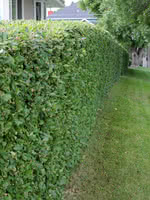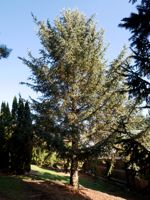Mon-Fri 9am - 5pm Mountain time
Peking Cotoneaster vs Meyers Spruce
Cotoneaster acutifolia
Picea meyeri
NOT AVAILABLE THIS SEASON - MIGHT RETURN
Peking Cotoneaster is a medium-sized shrub that is well adapted to colder climates. Best suited for use as a hedge, Peking Cotoneaster has dark green foliage that turns a stunning reddish orange in the fall.
Hardy fruit guru, Bernie Nikolai (DBG Fruit Growers), has started to recommend grafting hardy pear varieties to Peking Cotoneaster after his experiences were successful and produced fruit faster than other rootstocks. Remember to leave some nurse limbs if you try this.
Meyer's Spruce is a popular accent tree with a distinctive and refined pyramidal form. This tree resembles Blue Spruce with its flaking bark and bluish-green needles. Meyer's Spruce can tolerate very dry conditions. This species is deer resistant.
Peking Cotoneaster Quick Facts
Meyers Spruce Quick Facts
In row spacing: 0.3 m (1.0 ft)

